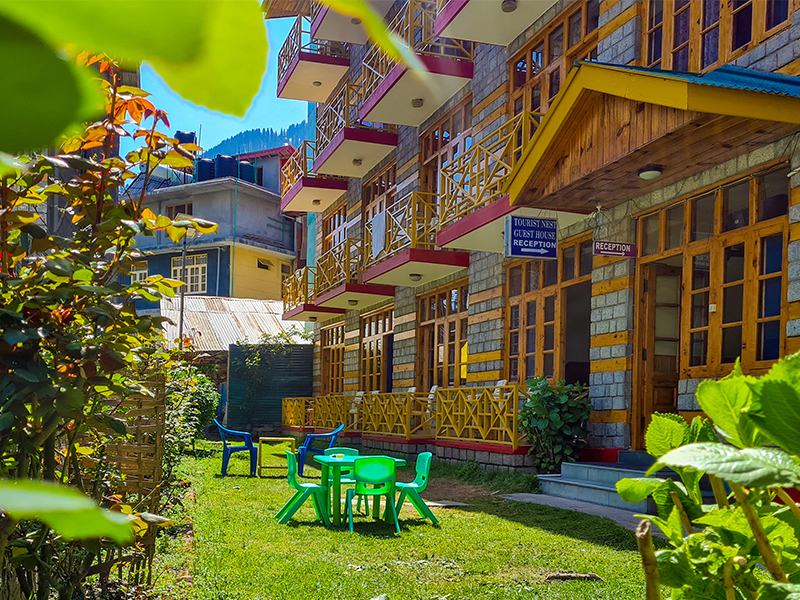




The Hampta Pass, located in the Pir Panjal range of the Himalayas, is a historic mountain pass that has been used for centuries by shepherds and traders traveling between the Kullu Valley and Lahaul Valley in Himachal Pradesh, India. Here is a brief overview of the history of the Hampta Pass:
Ancient Trade Route: The Hampta Pass has been an important trade route between the Kullu Valley and Lahaul Valley for centuries. Traders used this route to exchange g ...









Here are the top things to know about the Hampta Pass:
Location and Altitude: Hampta Pass is located in the Pir Panjal range of the Himalayas, at an altitude of approximately 4,270 meters (14,010 feet) above sea level. It connects the Kullu Valley to the Lahaul and Spiti Valleys in Himachal Pradesh, India.
Trekking Route: The pass is renowned for its scenic trekking route, which starts from Manali and passes through lush green valleys, meadows, rocky terrain, and snow-capped mountains. The trek offers stunning views of the surrounding landscape.
Duration and Difficulty: The trek to Hampta Pass is usually completed in 4-6 days, depending on the route and weather conditions. It is considered a moderate to challenging trek, suitable for both beginners and experienced trekkers.
Best Time to Visit: The best time to trek to Hampta Pass is from June to September, during the summer months when the weather is pleasant and the pass is accessible. The pass is closed during the winter due to heavy snowfall.
Flora and Fauna: The region around Hampta Pass is rich in biodiversity, with a variety of flora and fauna. Trekkers can spot alpine flowers, Himalayan birds, and sometimes even wildlife such as Himalayan ibex and snow leopards.
Cultural Experience: The trek offers a unique cultural experience as it passes through remote villages where trekkers can interact with the local people, learn about their way of life, and experience their hospitality.
Accessibility: The base point for the trek to Hampta Pass is Manali, which is well-connected by road from major cities like Delhi and Chandigarh. Manali also offers a range of accommodation options for trekkers.
Adventure Activities: Apart from trekking, the area around Hampta Pass also offers opportunities for other adventure activities such as camping, rock climbing, and rappelling, making it a popular destination for adventure enthusiasts.
Overall, the Hampta Pass trek is a memorable experience that offers a perfect blend of adventure, natural beauty, and cultural immersion.
Best Time to Visit Hamta is From April To June And From October To January
The Hampta Pass, located in the Pir Panjal range of the Himalayas, is a historic mountain pass that has been used for centuries by shepherds and traders traveling between the Kullu Valley and Lahaul Valley in Himachal Pradesh, India. Here is a brief overview of the history of the Hampta Pass:
Ancient Trade Route: The Hampta Pass has been an important trade route between the Kullu Valley and Lahaul Valley for centuries. Traders used this route to exchange goods such as wool, salt, and dry fruits.
Cultural Exchange: The pass has also facilitated cultural exchange between the people of the Kullu and Lahaul valleys, leading to the sharing of traditions, languages, and customs.
Historical Significance: The pass is said to have historical significance, with some legends suggesting that it was used by the Pandavas from the Indian epic Mahabharata during their exile.
Strategic Importance: The pass holds strategic importance due to its proximity to the India-China border. It has been used by the Indian Army for strategic purposes.
Modern-day Trekking: In recent years, the Hampta Pass has gained popularity as a trekking destination among adventure enthusiasts. The trek offers stunning views of the surrounding mountains, glaciers, and alpine meadows.
Natural Beauty: Apart from its historical and strategic importance, the Hampta Pass is known for its breathtaking natural beauty, making it a popular destination for nature lovers and photographers.
Overall, the Hampta Pass is not just a mountain pass but also a place steeped in history and culture, with a significance that goes beyond its natural beauty.
Here are some facts about the Hampta Pass:
Location: The Hampta Pass is located in the Pir Panjal range of the Himalayas, in the Indian state of Himachal Pradesh. It lies at an altitude of approximately 4,270 meters (14,010 feet) above sea level.
Trekking Route: The pass is a popular trekking destination, known for its scenic beauty and diverse landscapes. The trek usually starts from Manali and passes through lush green valleys, rocky terrain, and snow-covered slopes.
Duration: The Hampta Pass trek is typically a 4-6 day trek, depending on the route and weather conditions. It offers a moderate to challenging trekking experience, suitable for both beginners and experienced trekkers.
Season: The best time to trek to Hampta Pass is from June to September when the weather is pleasant and the pass is accessible. The pass remains closed during the winter months due to heavy snowfall.
Flora and Fauna: The region around Hampta Pass is home to a variety of flora and fauna, including alpine flowers, Himalayan birds, and occasionally, wildlife such as Himalayan ibex and snow leopards.
Cultural Experience: The trek to Hampta Pass offers a glimpse into the local culture and lifestyle of the people living in the remote villages of the region, such as the villages of Sethan and Chhatru.
Adventure Activities: Apart from trekking, the area around Hampta Pass also offers opportunities for other adventure activities such as camping, rock climbing, and rappelling.
Accessibility: The base point for the Hampta Pass trek is Manali, which is well-connected by road from major cities like Delhi and Chandigarh. Manali also offers a range of accommodation options for trekkers.
Overall, the Hampta Pass trek is a rewarding experience, offering stunning views, challenging terrain, and a chance to immerse oneself in the beauty of the Himalayas.
The Hampta Pass, nestled in the Himalayas, is not just a trekking destination but also a place steeped in folklore and stories. Here are a few tales associated with this breathtaking pass:
The Story of Hampta Devi: According to local folklore, the pass is named after the goddess Hampta Devi, who is believed to reside in the mountains. It is said that she protects the pass and the travelers who cross it, ensuring their safe passage through the rugged terrain.
The Legend of the Pandavas: Another popular legend is that the Pandavas from the Indian epic Mahabharata used the Hampta Pass to enter the Himalayas during their exile. It is believed that they crossed the pass and spent some time in the beautiful valleys beyond, leaving their mark on the landscape.
Tales of Shepherds and Traders: Over the centuries, the Hampta Pass has been a route frequented by shepherds and traders, carrying goods between the Kullu Valley and Lahaul Valley. Stories of their journeys, encounters with wild animals, and experiences in the harsh terrain have been passed down through generations, adding to the mystique of the pass.
Modern-Day Adventures: Today, the Hampta Pass is a popular trekking destination, and every trekker who crosses it has their own story to tell. From the thrill of conquering the high mountain pass to the camaraderie forged with fellow trekkers, each journey adds a new chapter to the story of the Hampta Pass.
These stories and legends, woven into the fabric of the Himalayas, add to the allure of the Hampta Pass, making it not just a physical destination but also a place rich in history and folklore.
The Himalayan Mountains are a majestic mountain range in South Asia, spanning five countries. They boast the world's highest peaks, including Mount Everest. These young, growing mountains feature rugged, snow-capped peaks, deep valleys, and glaciers. The Himalayas influence regional climate, harbor unique biodiversity, and hold cultural and spiritual significance. They attract adventurers, nature lovers, and spiritual seekers from around the world.


.jpg)
.jpg)


